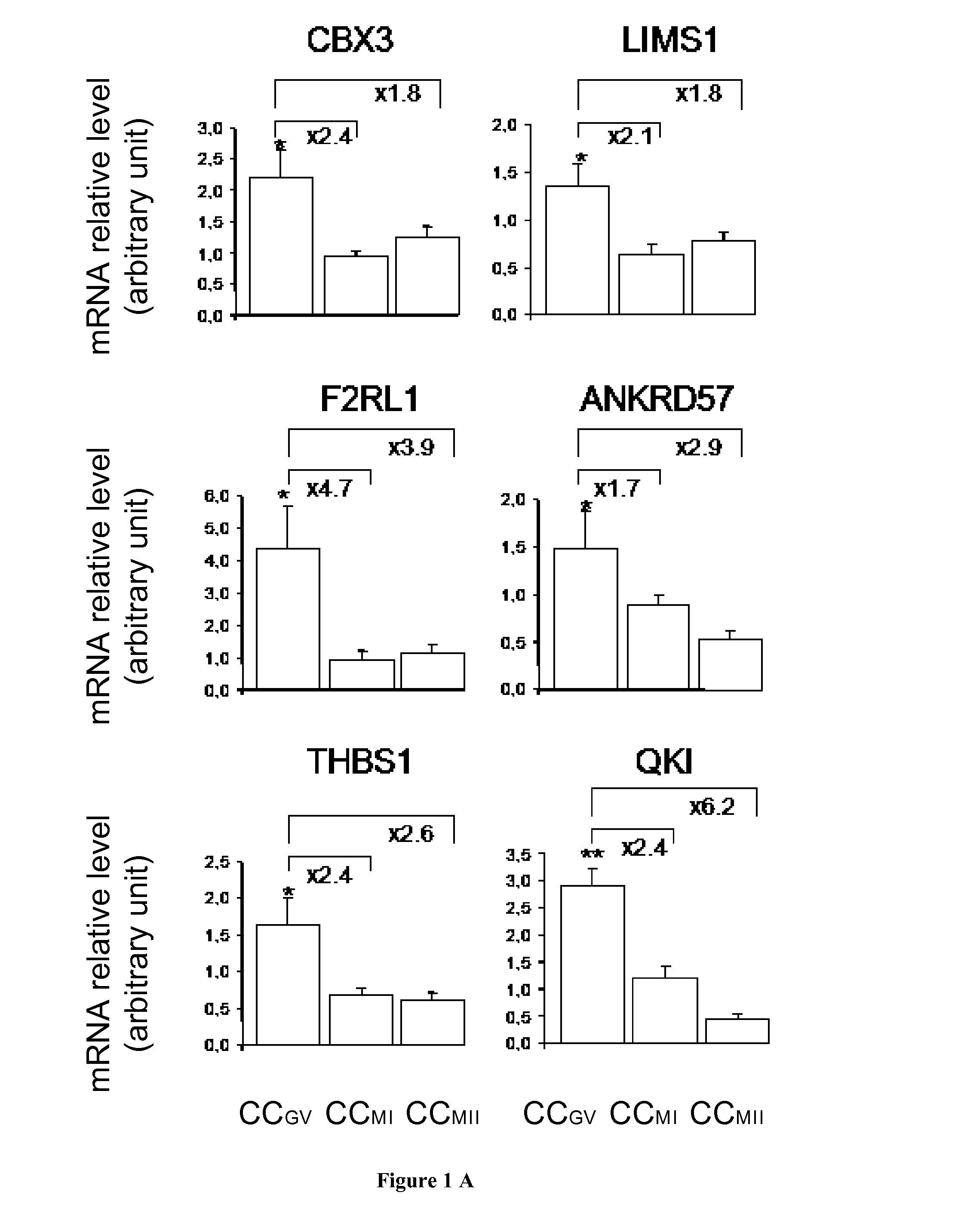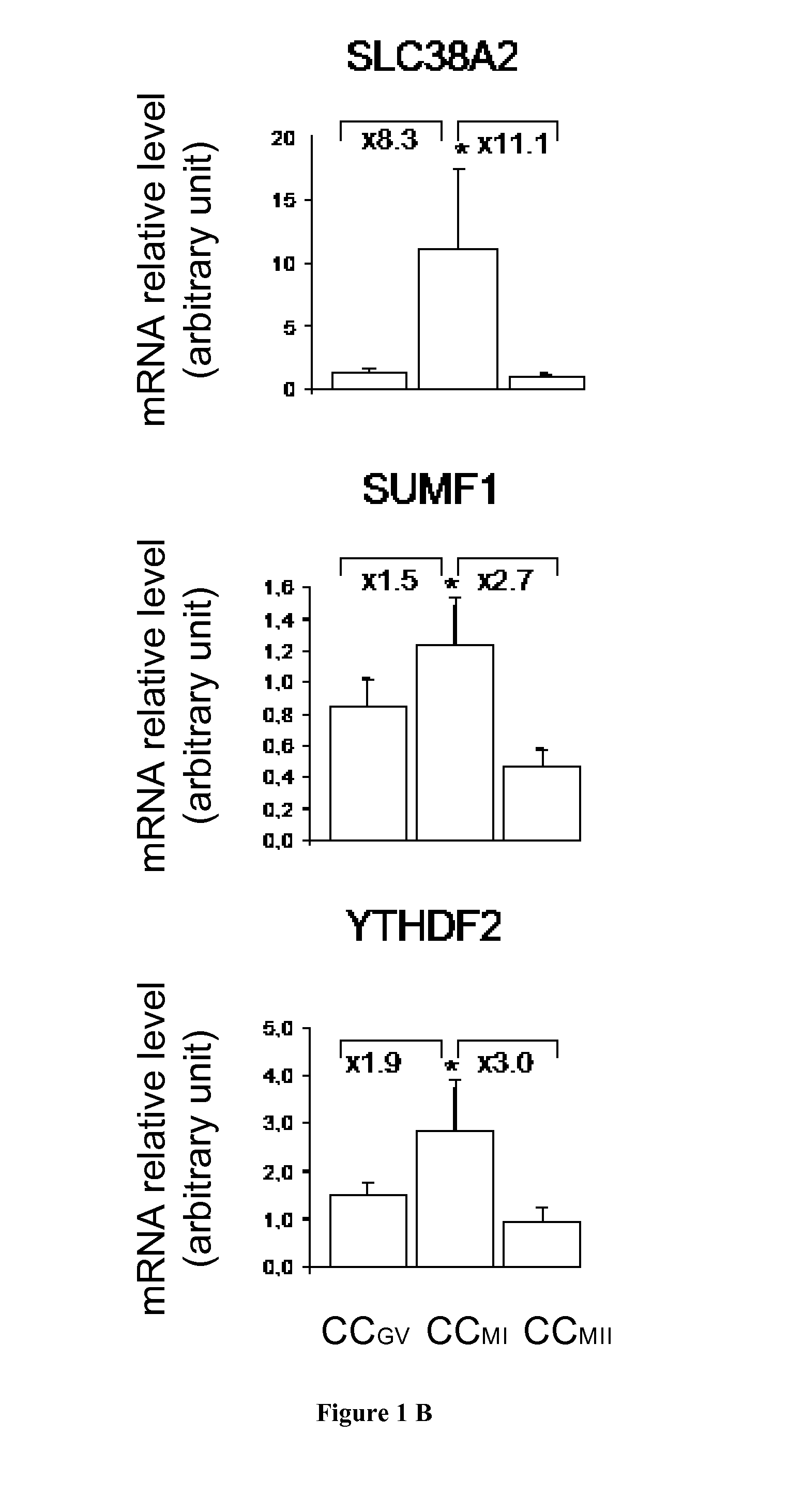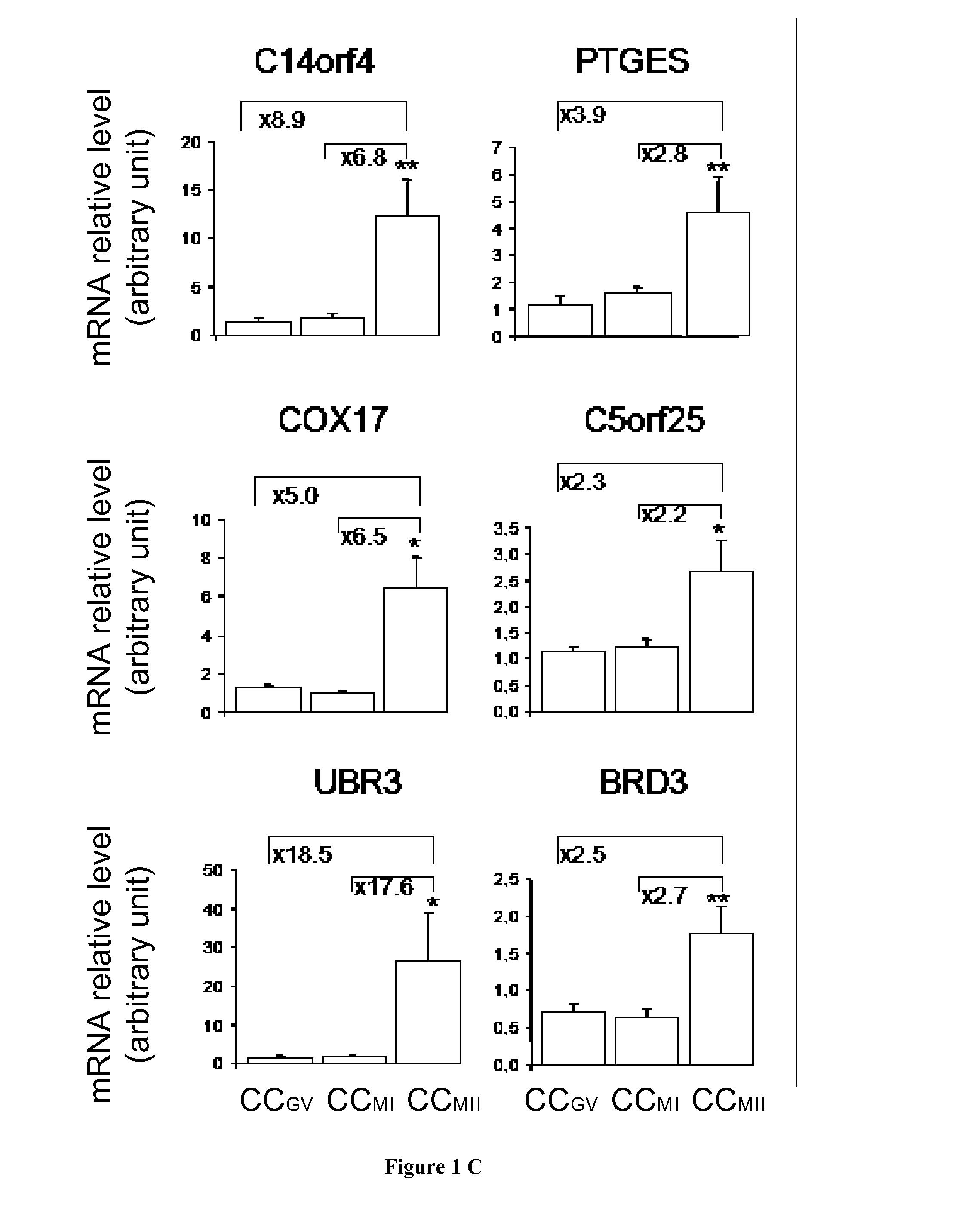Methods for determining developmental stage of human cumulus cells
a technology of cumulus cells and cumulus spleen, which is applied in the field of reproductive medicine, can solve the problems of reducing the incidence of multiple pregnancies, ivf and icsi success, and achieve the effects of improving the growth rate of human cumulus cells and increasing the pregnancy rate of infertile women
- Summary
- Abstract
- Description
- Claims
- Application Information
AI Technical Summary
Benefits of technology
Problems solved by technology
Method used
Image
Examples
example 1
A Non-Invasive Test for Prediction of Blastulation Rate by Gene Expression Profile of Human Mature and Immature Cumulus Cells
[0114]Methods:
[0115]Processing of Cumulus Cells:
[0116]Normal responder patients (age<36) referred to our center for intra-cytoplasmic sperm injection (ICSI) were included in this study. Patients were included after written informed consent and the project was approved by the Institute review board (IRB). Patients were stimulated with a combination of GnRH agonist or antagonist protocols with recombinant FSH or with HP hMG. COCs were recovered under ultrasound echo-guidance 36 h after human Chorionic Gonadotrophin (5 000 UI, hCG) administration. CCs were separated mechanically from the corresponding oocyte as previously described (Hamel et al., 2008). One to 3 CC samples per patient were randomly selected from the same CC cohort. A total of 111 CC samples obtained from 40 patients were used in this study.
[0117]For microarray analyses, 24 individual CC samples o...
example 2
Isolation of Human Cumulus Cells
[0141]Cumulus cells are obtained from consecutive patients with their informed consent. After examination of the cumulus mass appearance, the human cumulus cells (hCCs) are mechanically separated from the oocyte by using two needles. One needle placed on the hCCs layer to keep the oocyte in place and the other needle, is used to quickly cut off as much as possible of the cell layer, without touching the oocyte. Aspirate the cell with as little medium as possible and transfer these cells into the prepared medium.
example 3
Culture and Amplification of Human Mature Cumulus Cells (hMCCs)
[0142]In an initial experiment, hMCCs are cultured in Dulbecco's modified Eagle's medium (DMEM) with 10% fetal calf serum (FCS) and 10 ng / ml fibroblast growth factor (bFGF) and with gelatin (0.1%) coated plates. Using this cultivation protocol, hMCCs adhere to surface at 4 hrs after inoculation. Medium is replaced three times a week until confluence reaches 80%. Cells are passaged every 5-7 days enzymatically with 0.25% trypsin / EDTA. The MCC line are adapted to growth on a this condition (>12 passages).
[0143]Serum (FCS) is an undefined substance with multiple factors that might influence cell function and the reliance on animal products limits the clinical application. For this reason, cultivation protocols are optimized for long-term cultivation of hMCCs on animal free condition. We coat culture plates with HP01 medium containing human collagen I-III at 10 μg / cm2 during two hours. We remove carefully the adhesion soluti...
PUM
| Property | Measurement | Unit |
|---|---|---|
| temperature | aaaaa | aaaaa |
| temperature | aaaaa | aaaaa |
| temperature | aaaaa | aaaaa |
Abstract
Description
Claims
Application Information
 Login to View More
Login to View More - R&D
- Intellectual Property
- Life Sciences
- Materials
- Tech Scout
- Unparalleled Data Quality
- Higher Quality Content
- 60% Fewer Hallucinations
Browse by: Latest US Patents, China's latest patents, Technical Efficacy Thesaurus, Application Domain, Technology Topic, Popular Technical Reports.
© 2025 PatSnap. All rights reserved.Legal|Privacy policy|Modern Slavery Act Transparency Statement|Sitemap|About US| Contact US: help@patsnap.com



